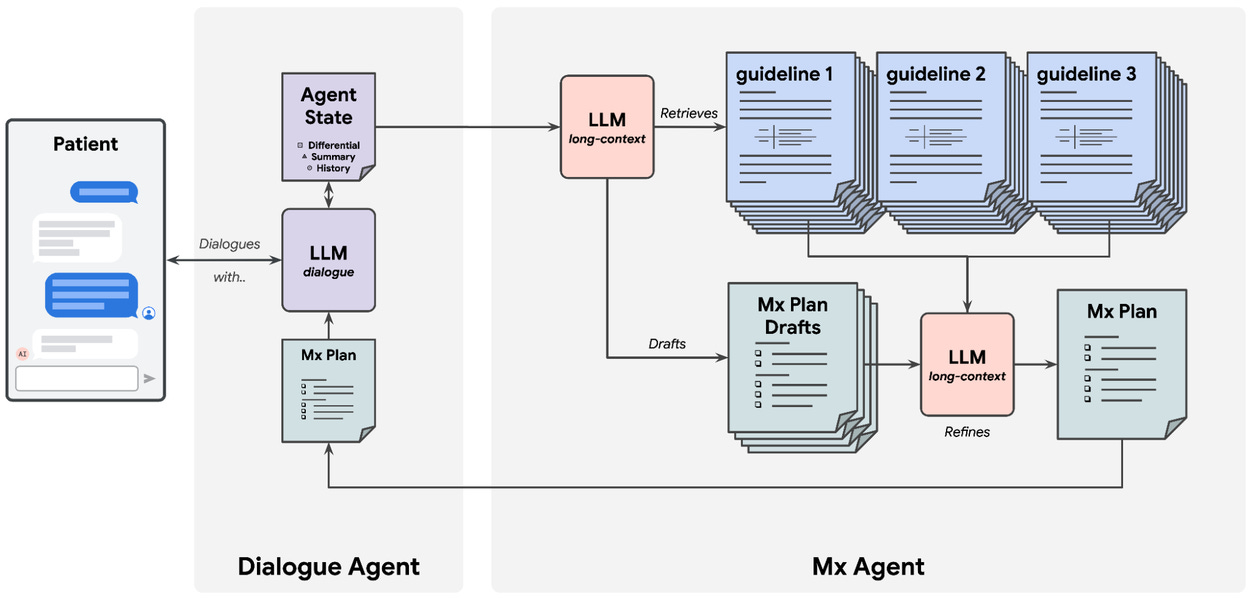AI Beyond Diagnosis: How Google's AMIE is Changing Long-Term Disease Management
From chronic care to clinical documentation, AMIE’s evolution highlights the future of AI-powered healthcare.
Google’s AMIE is evolving from a diagnostic tool to a comprehensive disease management assistant. Learn how this AI system tracks long-term patient care, reduces physician paperwork, and enhances clinical decision-making over time.
Introduction:
Healthcare is rarely a one-time event. For patients with chronic illnesses like diabetes, heart disease, or cancer, care unfolds over months, years—or even decades. Yet many AI tools in healthcare are designed to address single moments: a diagnosis here, a treatment recommendation there. Google’s latest evolution of AMIE (Articulate Medical Intelligence Explorer) aims to change that, bringing longitudinal disease management into focus.
What is Longitudinal Disease Management?
In simple terms, this means helping doctors manage a patient’s condition over time—connecting the dots between every appointment, lab test, medication change, and symptom progression. It’s not just about seeing the patient today, but understanding how they were last year and what they might need next year.

How AMIE is Evolving:
1. Looking at the Big Picture
AMIE used to focus on assisting with diagnosis—interpreting current symptoms and lab data. Now, it can review a patient’s history, pulling in notes, test results, and past treatments to build a complete picture over time. This timeline-based reasoning is critical in chronic care.
Example:
A patient with type 2 diabetes might see their A1C levels fluctuate over several years. AMIE can detect patterns, like whether a medication switch led to better control—or if a missed follow-up coincided with worsening symptoms.
2. Clinical Reasoning
Doctors don’t just react to today’s lab results—they think about how a condition has changed, what treatments worked before, and what’s likely to happen next. AMIE is learning to do the same, bringing more contextual intelligence to its recommendations.
Example:
For a cancer patient, AMIE could suggest different monitoring plans based on how well the patient responded to previous treatments, ensuring care is personalized and adaptive.
More Than Medical Advice—A Documentation Ally
Beyond reasoning, AMIE also assists with clinical documentation, summarizing visits and drafting progress notes automatically. This is a game changer for physicians overwhelmed by administrative tasks. Instead of spending hours writing notes, doctors can focus on talking to patients.
Evaluated in Real-World Scenarios
Google’s team tested AMIE using realistic patient cases, tracking its reasoning and documentation abilities across complex medical histories. The result? Significant improvements in how AMIE synthesized and understood ongoing care needs.
Why This Matters
As healthcare systems face physician burnout, rising administrative burdens, and increasingly complex patient populations, tools like AMIE offer a glimpse into a smarter future. AI can become not just a second opinion, but an ongoing partner in care.
Looking Ahead: The AI-Powered Care Team
In the future, AMIE could be part of a team of AI tools—some specializing in diagnosis, others in documentation, and some in predicting risks or suggesting proactive interventions. This ecosystem approach could help healthcare become both more efficient and more personalized.
Conclusion
AI’s role in healthcare is expanding fast. With AMIE’s new abilities in longitudinal disease management, Google is showing that AI can be more than a one-time consultant. It can become a trusted partner through every step of a patient’s journey.


